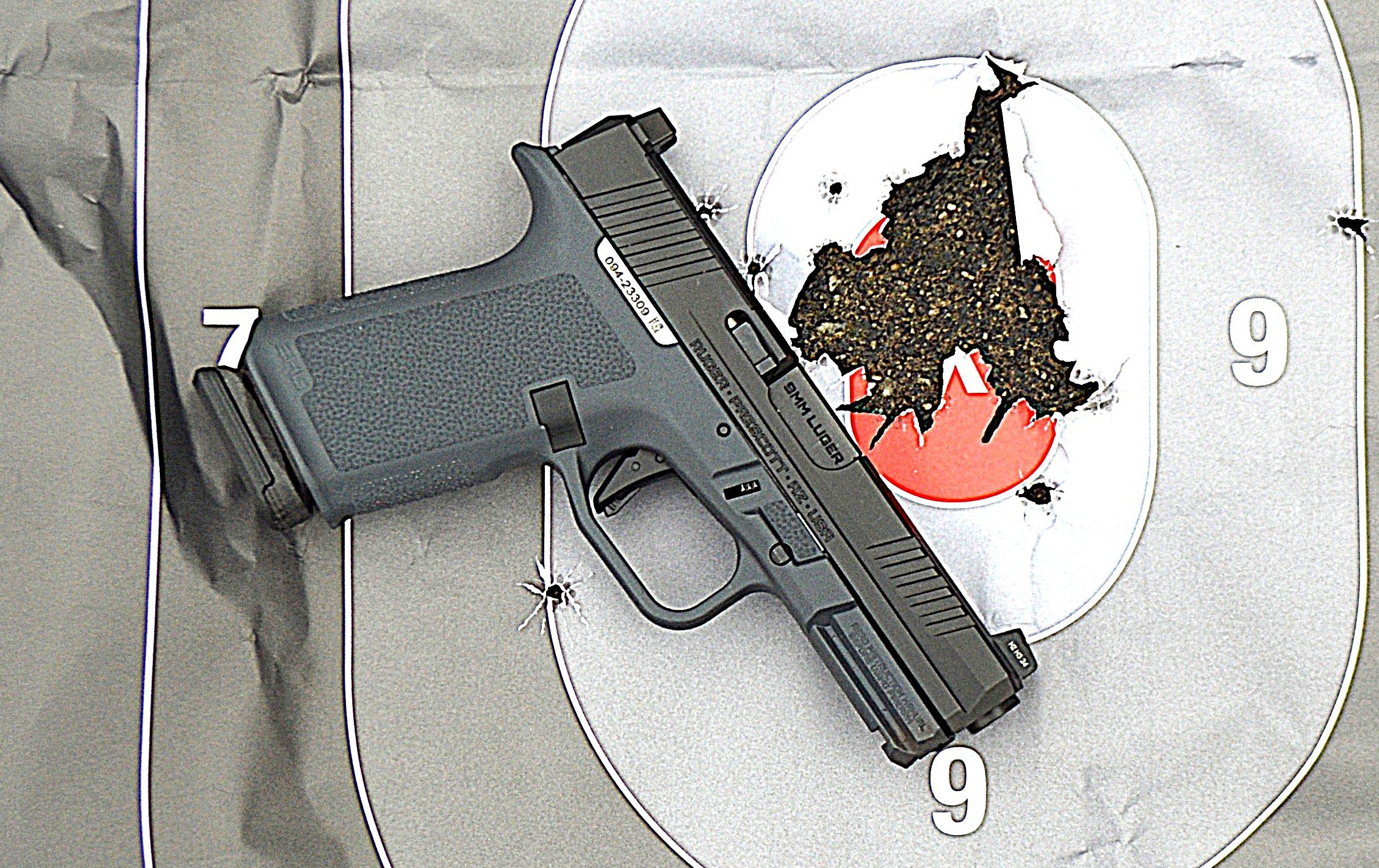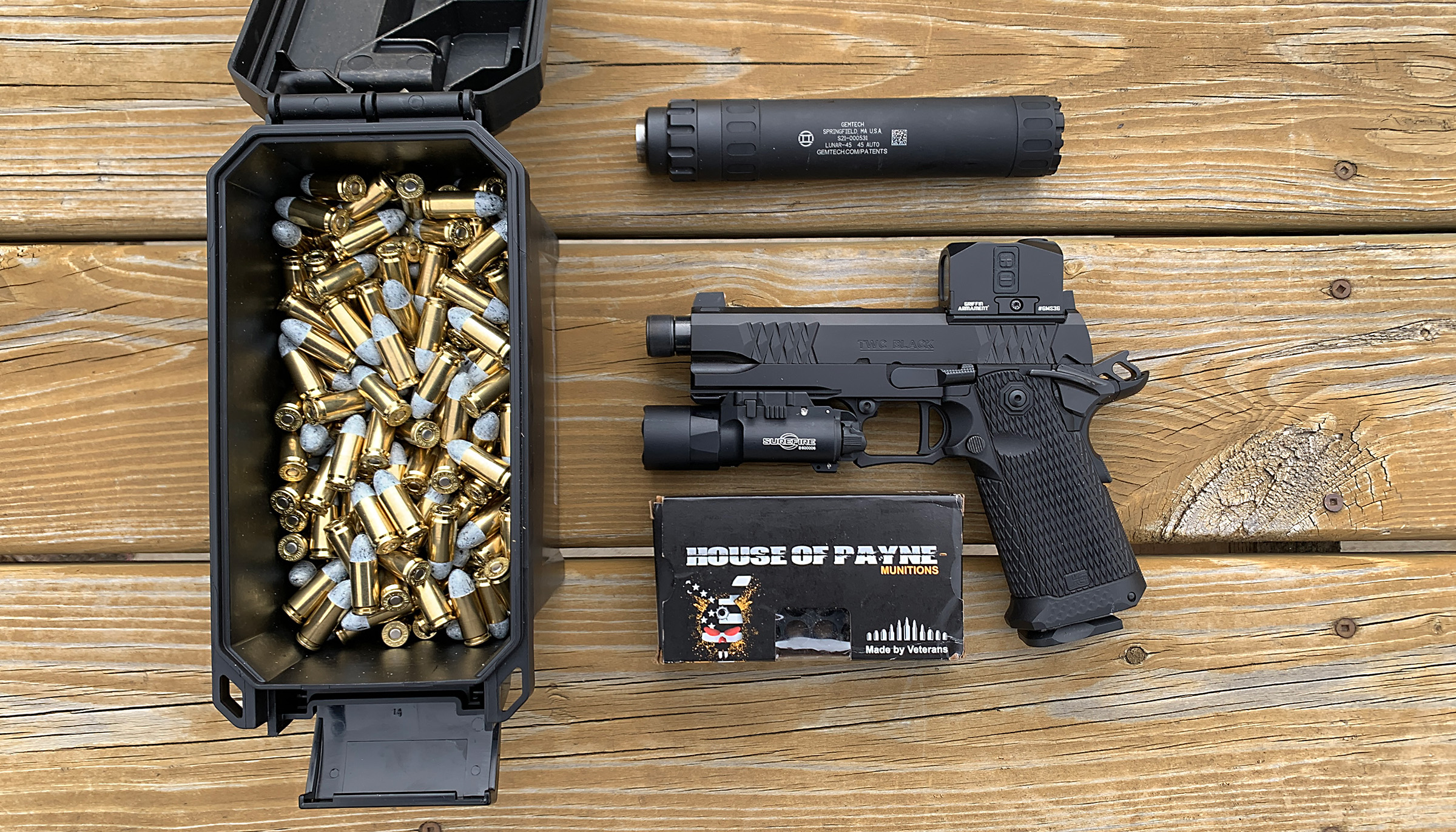The Colt Single Action Army revolver is probably the most recognizable handgun ever, and its silhouette has graced the big screen in the holsters of heroes and villains, both real and imagined. Colt has been making the SAA off and on since 1873. Over the last several decades, replica makers and major manufacturers have spun their own versions. While that distinctive outline and general operation has remained the same, the SAA has undergone many minor changes since it was first introduced. Cimarron’s US Cavalry Henry Nettleton model represents the Colt Single Action as it was first adopted by the Army in 1873 without having to dig up a surviving original.
History: Henry Nettleton and the Colt 1873
The US Cavalry concluded the 1872 pistol trials by selecting the Colt Model P, otherwise known as the Colt 1873, to replace its existing stocks of cap-and-ball Colt 1860 Army revolvers. This gate-loaded six-shot cartridge revolver was faster to load than the old model and more durable under field conditions compared to the Smith & Wesson No. 3 revolvers the Army trialed in 1871. The revolver was also made available on the commercial market with common barrel lengths including 4 ¾ inches, 5 ½ inches, and 7 ½ inches. The Cavalry adopted the 7 ½ inch model.
Contracts for Colt’s new revolver went out and lots came though the hands of Army inspectors, who then sent them to the troops. In 1878, Henry Nettleton was just one such inspector. He worked for the US Ordnance Department for only that year and inspected a contract of 3,000 revolvers. Ordinarily, Army inspectors gave their stamp of approval to individual parts on the right side of the revolvers, but Nettleton stamped the hammer and triggerguard on the left side.
This small and insignificant footnote is amplified because these revolvers had the distinction of later becoming refurbished by the New York Militia in 1895-1896. Their barrels were cut down to 5 ½-inch models, a move copied by Springfield Armory in time for these revolvers to see some use in Cuba during the Spanish-American War.
Cimarron’s US Cavalry Model
Uberti of Italy and Cimarron Firearms of Fredericksburg, Texas, teamed up to recreate this rare but stubborn historical variant. Henry Nettleton’s unusual placement of his initials is present on all the external parts, but at its heart, it is a copy of the very first generation of Single Action Army revolvers.
The Henry Nettleton Cavalry Model features a case-hardened steel frame and a blued cylinder, grip frame and barrel assembly. The Cavalry model is denoted by its 7 ½-inch barrel and .45 Colt chambering.

The sights consist of a narrow v-notch groove in the top strap of the frame paired with a rounded blade front sight. The revolver wears a pair of lacquer-stained walnut grips in similar fashion to the originals. While most replicas and many surviving Colt SAAs use a spring-loaded détente to retain the cylinder pin, Cimarron’s Henry Nettleton model uses a pre-War frame style that uses a retaining screw in the front of the cylinder frame.

The revolver is a six-shooter, but it is best practice to load five and keep the hammer over an empty chamber, as the Cimarron dispenses with transfer bars in favor of a fixed firing pin and the old-style Colt safety notch that some replicas omit. You will notice when you thumb back the hammer that the first audible click is the safety notch. This raises the hammer off the live round, but in the 19th century, that safety notch wasmshallow and untrustworthy. Some replicas omit this feature altogether, but Cimarron includes it and the other three clicks that give this model the distinctive sound of a Colt. The second click being the half-cock to free the cylinder for loading through the loading gate and ejector rod on the right-side of the pistol. The third click occurs when the cylinder stop locks up the cylinder. The fourth is when the hammer is at full cock and you are ready to shoot.
On the Range
While I have handled a few originals in my time, most of my single-action shooting has been done with .22 rimfire and cap-and-ball revolvers. Going up to centerfire, let alone all the way up to .45 Colt, was an experience.
Most of my range time with the Cimarron Cavalry model consisted of a mix of Hornady and Winchester 250-grain lead cowboy loads that came out to 200 rounds downrange. I also worked in a box of Federal 225-grain jacketed soft points and fifty-rounds of black-powder 255-grain handloads.

The Cimarron Cavalry model loads like any other Colt or Colt clone. With the hammer drawn back to half-cock, you can open the loading gate and drop your rounds into the chambers, rotating the cylinder as you go until the cylinder is full. Although I never carried the revolver in any capacity, I did stick to the five-round rule by loading one round, skipping a chamber, then loading four and dropping the hammer on the empty.
At first, I didn’t know what to expect out of this revolver in my hands, given I never fired any of its type before. So, I dove right in to the fun by squaring up to a steel silhouette and a set of eight-inch plates at 10 yards and letting fly one-handed.
The sights are small, which can make them hard to find in a hurry. Thankfully, the balance of the 7 ½-inch barrel and that pointable Navy-style grip, made it easy to point the revolver like a finger and finding the sights was not far behind. I dropped the hammer and hit the silhouette exactly where I was aiming. And my hand was still intact, too. Those Hornady and Winchester cowboy loads are equivalent to about a .45 ACP power wise, and the revolver has a characteristic muzzle rise that is pronounced but more akin to a soft push in the hand over a sharp slap. I fired my other four rounds, poked out the empties with the ejector rod, reloaded and did it again, backing up all the way to 35 yards in the process. I recall two misses out of 20 rounds. I have to thank the small sights for not covering up my targets, despite my initial difficulty in picking them up. The excellent balance and a travel-less 3 ½-pound trigger pull did not hurt.

Next, I put the revolver on paper to see what kind of repeatable accuracy I could get. Hitting anywhere in steel counts but you might be called upon to shoot something more animated and it pays to know exactly where the bullets go. Moving up to 10 yards from paper, I grouped the revolver offhand. The Hornady 250-grain cowboy load was the most consistent in terms of overall accuracy and it was not difficult to chew five-rounds through a 2-inch hole. The Winchester rounds performed on par with the Federal jacketed loads, yielding a 3-inch group. I later tried some black-powder handloads consisting of 40 grains of FFFg powder and a 255-grain round-nosed bullet. This is original to the Army load and it is stout in the hand but manageable. In terms of accuracy, these rounds split the difference between the Hornady and other smokeless loads. In terms of fun factor, the black-powder rounds are off the chart in terms of power and smoke.

The .45 Colt is a very adaptable cartridge that can be loaded up to .44 Magnum pressures, but these loads are only truly safe in an oversized single-action or double-action gun, not with Colts or their replicas. Cimarron’s Colt is metallurgically tougher than any original Colt, but out of curiosity I did bring along some Ruger Only .45 Colt loads from Buffalo Bore for one range trip. I had no intention of firing them but I did find that these rounds were too long to fit into the cylinder and have it turn. Those Ruger Only loads are not labeled so much as calling a Ruger particularly tough, but their all-cast revolvers have a thicker and longer cylinder that can actually cycle these loads.
While a true hotrodder won’t be satisfied with the Cimarron, those black-powder loads were warm, running out across my Caldwell Chronograph at close to 1,000 feet per second. I got through a box of 50 before the action started to get stiffer to work. While most folks, and even most cowboy action shooters, don’t shoot black powder, it is worth noting for those that do that the pre-war cylinder pin screw will have to come out so you can spray down the action in between stages. That can be a pain, especially when your fellow shooters using post-war style revolvers can have the cylinder out with a push of a detent. But as Cimarron aims, this revolver does more than give you a shooting iron, but presents it in the style as what we would encounter in the days of black powder when more maintenance was necessary but not necessarily handy.
Parting Shots
Cimarron is guilty of replicating several obscure variations of the Colt Single Action. Despite Nettleton’s obscurity and his short tenure, the revolvers he stamped earned a lot of mileage. Cimarron’s US Cavalry Model represents such a revolver at the very start of its service life. Although it lacks some of the refinements, a shorter barrel or sheer size that modern competitors and magnum junkies would favor, this model is a great way to experience the Single Action Army in its original form without having to track one down and is an excellent shooter in its own right.
Check out Ammo To Go, the ammunition retail sponsor of TTAG. Get your bulk and quality ammo for a bargain by visiting their site.








